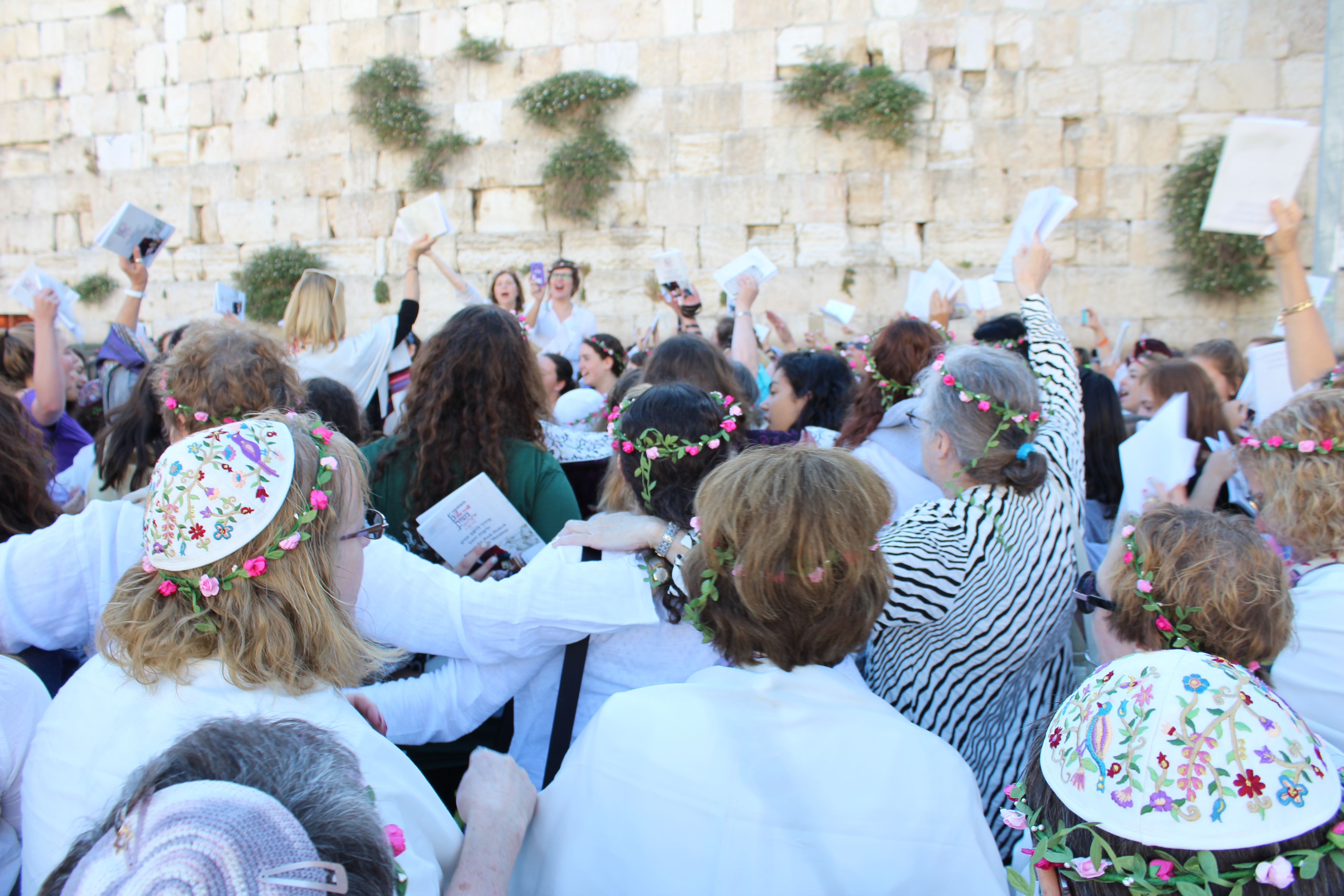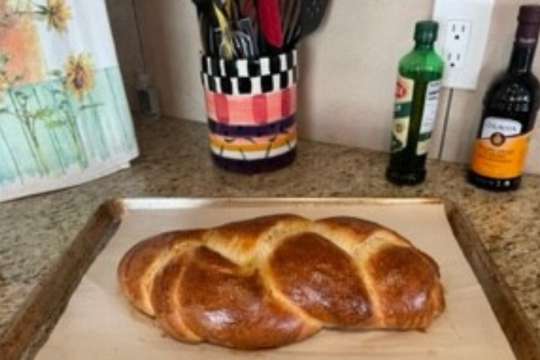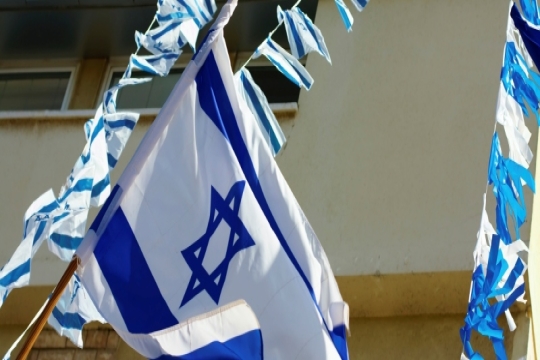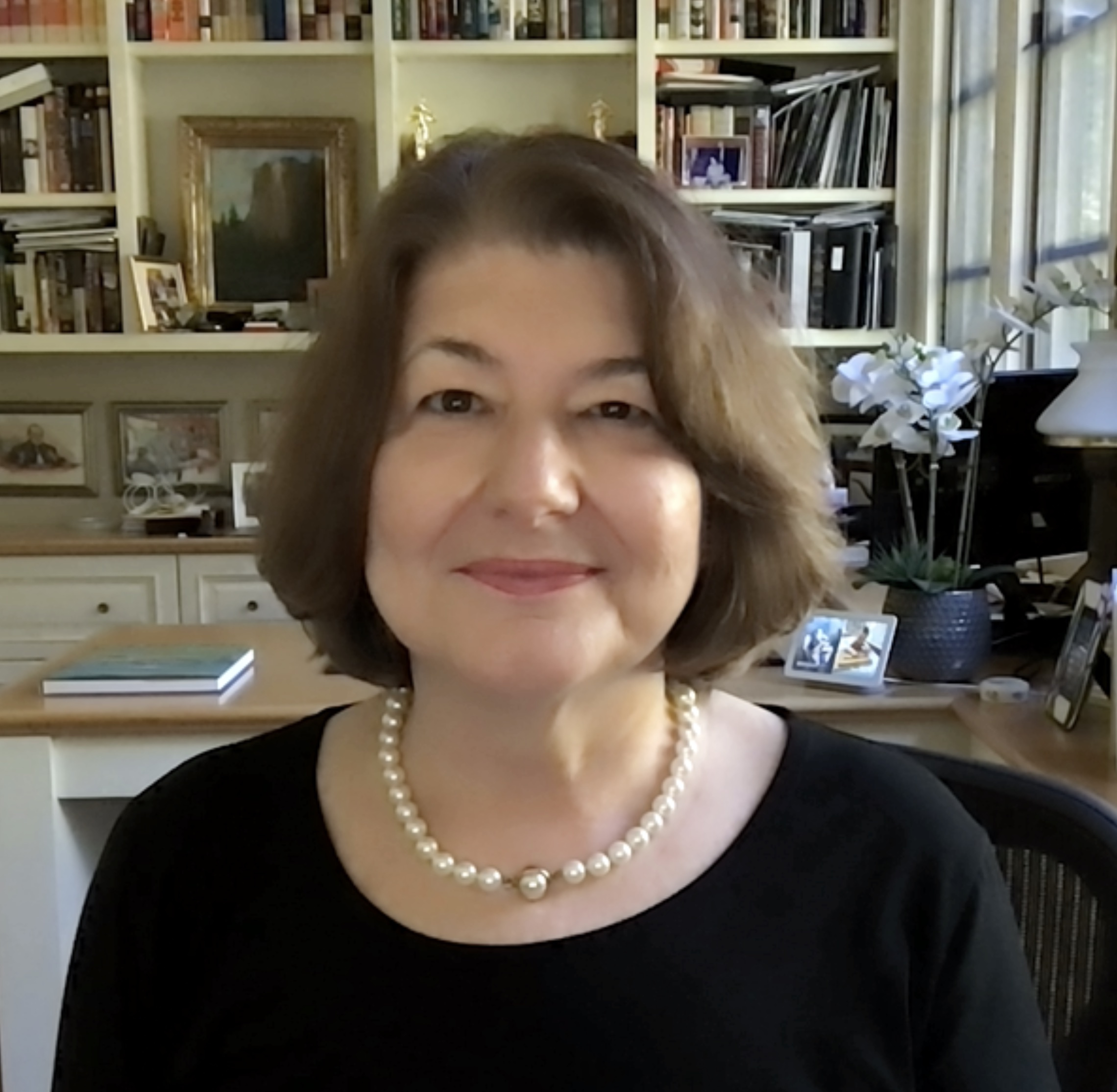
When I signed up for WRJ’s 2017 Journey to Israel I knew that the itinerary would not only include the historical and cultural sights one would expect to visit in Israel but also offer unique and very special experiences that would set it apart from my previous two trips decades ago. And indeed, this last week delivered on the promise: long days spent together with a bus load of WRJ women and their mothers, mothers-in-law, daughters and friends; a panel discussion with local women rabbis and another with participants in a Mother/Daughter Bat Mitzvah program; a visit to the Druze village of Dallat El Carme; a field seminar at the Golan Heights with a former IDF Senior Intelligence Officer. Definitely not the average tourist’s sightseeing trip!
On Thursday, after entering Jerusalem with a Shehechiyanu at Mt. Scopus, we met with Anat Hoffman, Executive Director of the Israel Religious Action Center and Chair of Women of the Wall (WOW) and with Lesley Sachs, Director of WOW who spoke about religious pluralism and social justice in Israel. Our plan was to attend WOW’s Rosh Hodesh prayer service the following morning at the Kotel. For Rosh Hodesh Sivan, the month of receiving the Torah, we were given flower wreaths to wear on our heads and we were encouraged to wear white.
Friday morning we met at 7:00 am at the Kotel. We didn’t know what to expect. Would we be able to bring in a Torah? Would we be allowed to pray in the women’s section, wear our Tallitot and sing and read from the Torah? What kind of reception would we receive from the police and from the other worshippers? For many of us, this was the first time at the Kotel. For me it was the first time in the women’s section – the last time I had visited the Kotel in the 80’s, and there had been no women’s section because and men and women could pray together at the Wall.
We gathered outside the security entrance to the Kotel plaza, 46 WRJ women along with a crowd of WOW supporters, feeling conspicuous as curious bystanders stared at us. Anat produced the large Torah, which we were not permitted to bring through security.
One by one, we passed through the bag check and metal detector and followed Anat to the women’s section of the Kotel. We put on our Tallitot and the service began. The morning was beautiful, skies blue, temperature perfect, the sun not yet risen above the top of the Wall. But despite the beauty of the setting, despite our joy at being in Jerusalem for Rosh Hodesh, despite the almost overwhelming emotion of being at that most holy place, the setting was not a peaceful one.
As we joined together in prayer and song, Haredi women near us whistled, shouted, screamed and banged in an effort to drown out our voices and disrupt us. We were badgered, jeered at and stalked. The cacophony was so deafening that I welcomed the ear plugs being offered by WOW volunteers accustomed to this behavior and who came prepared. Several young Haredi girls dressed in black with their faces at times completely covered by black scarves were particularly aggressive, often standing inches away from us. Police quietly intervened and herded them away from us. Yet they returned again and again and continued their screaming for the entire service.
A small Torah scroll was magically produced and the service proceeded. Women, including several WRJ sisters, chanted from the Torah and several Bat Mitzvahs were celebrated.
Somehow despite the din, we experienced the joy of women praying out loud and singing at the Kotel, of women reading from the Torah in that most holy space. Somehow, despite the din, we felt the ruach we had hoped for. We also felt pride that we had made a statement for gender equality at the Kotel.
And yet, for me this joy and pride was tinged with sadness – sadness that our presence and the expression of our prayer marred the ability of the Orthodox women to pray according to their custom and certainly may have seemed disrespectful to them; sadness that our expression of prayer and theirs cannot coexist peacefully and respectfully; sadness that change so often cannot be achieved by compromise but instead requires activism.
On this Rosh Hodesh Sivan, I hope we helped move the needle a little closer towards pluralism and gender equality at the Kotel.
Watch Anat Hoffman’s video about Rosh Chodesh Sivan.
Julia Weinstein is the WRJ Vice President of Marketing & Communications and Advocacy. She currently also serves as the WRJ Pacific District Vice President of Marketing & Communications. She is a member of University Synagogue in Los Angeles, CA.
Related Posts

Continuing to Educate and Empower People Together

My Challah-Making Experience


